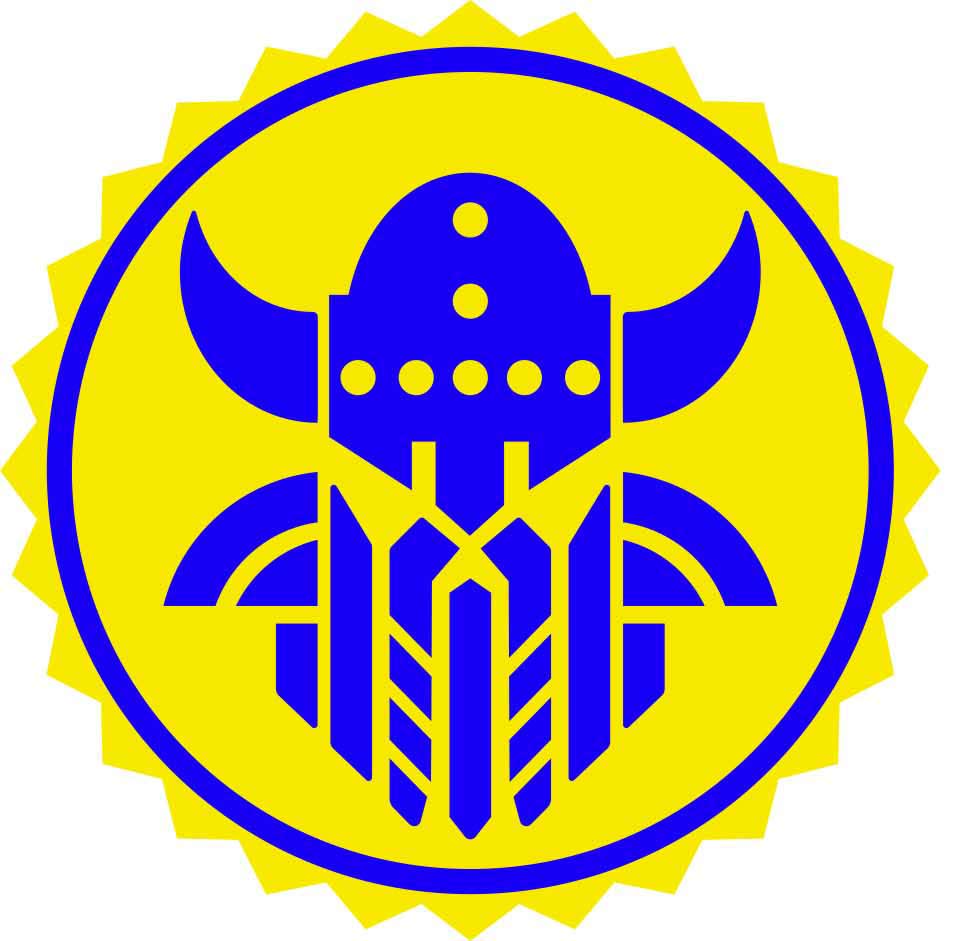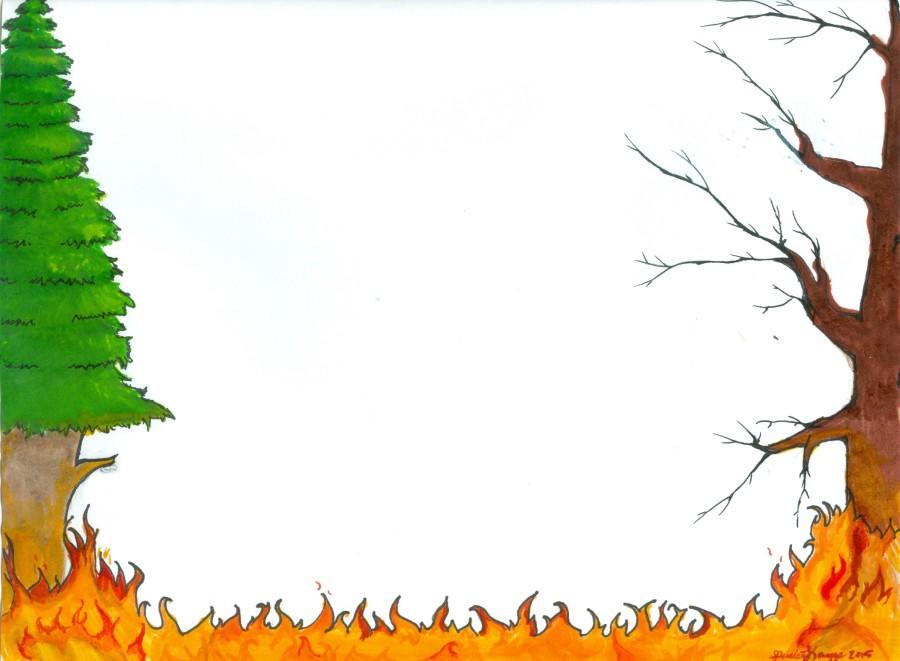Students reach out to suffering community
Wildfires are devastating but communities they affect are not left without hope, several groups have gotten to work rebuilding scorched communities and helping hurting people.
Red Cross turned Lake Roosevelt and Tonasket High School into safe houses for residence in the areas of Okanogan, as well as many other schools.
Future Farmers of America (FFA) adviser and Natural Resources Teacher David Wetzel, gives a more personal account of the damage caused by fires.
“One of my fellow advisers in Chelan–one of the best advisers anywhere in the country–he lost his entire home, barn, livestock and unfortunately some of the livestock that had belonged to some of his chapter members,” Wetzel said. “[The FFA students] had gotten themselves burned out of their accommodations the year before or the year before that. So they had no barn to place them, so he was [housing] these animals for them and then he gets burned out.”
The communities affected are for the most part, not affluent. Many of the families would be unable to rebuild, according to Community Foundation of North Central Washington Executive Director Beth Stipe.
More than 200 homes were destroyed, and the Okanogan Complex wildfire was measured at 256,567 acres burned.
“I can tell you that these families that we are working with, would not recover on their own without help. These are oftentimes very poor families living in rural areas where many of them have maybe been off the grid. Maybe they were given land through multiple generations but it is outside the community,” Stipe said. “Sometimes they do not have access to the same resources we have such as close electricity or they are on a well and septic system that was destroyed by the fires. So they do not even have access to clean water or a septic system that will work unless it is fixed. Those are very expensive fixes.”
Red Cross Communications Manager Jaqueline Koch describes some of the immediate aid that the Red Cross has delivered to afflicted locations in Washington (Chelan, Douglas, Okanagan, Ferry and Stevens counties) and Idaho.
“Since wildfires have broken out this season, the Red Cross has been involved assisting them with emergency needs. So those emergency needs include shelter, heating, accessing resources and providing comfort kits or relief supplies,” Koch said. “In the most recent outbreak of wildfires that we saw in Eastern Washington and the Idaho panhandle, we opened 17 shelters. We also mobilized feeding units that would prepare up to 1,000 meals a day in Okanagan County. Currently what we are doing is helping people get back on their feet.”
The Okanogan Complex wildfire in Washington State became one of the largest wildfires in history, burning more than 400 square miles.
The Community Foundation uses a strategy of care that has direct communication with families and those impacted, to provide specific help.
“We have been one of the leaders in establishing what is called an unmet needs round table. How that works is we pull other community members, business leaders, faith-based organizations and other non-profit organizations and we all sit at the same table,” Stipe said. “We work with the disaster case managers, who work directly with those clients who have been affected by those fires to work through the process of recovery and determine what those needs are and where they need help. Then we all sit at the table review those applications and then we allocate the resources that donors have given us to help those people.”
The Wenatchee Valley Humane Society also provides assistance to families affected by fires, by helping families take care of their pets as well as finding and aiding stray animals.
“When the fires were still a threat we housed (for free) 44 dogs and cats and two horses. We have delivered food, donations and cash to rescues in the Okanogan area and have driven all over Eastern Washington to donate food,” Wenatchee Valley Humane Society Program Coordinator Tamara Hively said. “We were very lucky to have so many donations come to us. People reached out from all over. We then distributed the supplies. Just because the fires are ending does not mean that people are without problems. We will continue to help anyone affected by the fire, as well as the community in general.”
The U.S. Forest Service spent around $200 million a week to fight the wildfires; that was used for paying salaries, water, food and equipment.
Students can find ways to aid community service groups dealing with fires, in a number of ways including joining the Red Cross, fund raising or becoming more prepared.
“I think at this point in time it is about looking forward and considering that we will most likely be facing this kind of disaster again and to prepare for it. There are many ways in which people can prepare,” Koch said. “For students one way to assist is to start to engage now and to contact, either through the Red Cross website or through your local chapter, to get in touch and sign up as a volunteer.”
The 2015 Washington State wildfires were sparked by lightning.
Koch encourages individuals, especially students, to be proactive when it comes to natural disasters.
“And start engaging in training and becoming active in that way. Another way is to assist in fund raising another way is to just become aware of disasters in our area and to become prepared. To be ready to respond for your individual self, for your family, for your community with your fellow friends,” Koch said.
Volunteers received basic fire training. These volunteers were needed because the fire to fire fighters’ ratio was too high.
Koch said. One way to help prepare oneself for an emergency is to download some of the Red Cross’s applications, according to Koch.
“The Red Cross has a number of mobile applications. So they can download those for free off the Red Cross’s website. There are applications that are dedicated to emergency preparedness, some specific to wildfires,” Koch said. “So just being prepared and having that information in your hand is an amazing way to help. Sometimes people do not have it and you can share that information. Then more people are prepared and ready to respond…be prepared in ways that you can get out quickly and get the things that you need.”
Wealth need not be a barrier to helping out, volunteering time can help as well. Stipe describes why the Community Foundation is a good place for this kind of service.
“Anyone can be a philanthropist you do not have to be a mega-wealthy person to make a difference in your community. You can do fundraisers. Students are very creative about getting out and raising funds in their schools and their communities and those dollars can be directed to support the survivors of these fires,” Stipe said. “Oftentimes during breaks and things like that there are organizations that organize volunteer spring break trips. So students can actually get their hands dirty and come and help rebuild or clean up after the fires.”
The area was declared a federal disaster and fighting assistance arrived from as gar away as Australia and New Zealand.
Students may donate to wildfire causes through the FFA T-shirt funds, as explained by Wetzel.
“Part of the money going for that T-shirt goes to other FFA members and the communities where the wildfires this last season came through and destroyed so much of their personal property. Also learn about what is there, what the problems are,” Wetzel said. “Help the process move along where managers with the right ideas about how to manage these forests in a way that is compatible with more frequent burns can do their job. We need more people out there who understand what is going on and but then also folks who can understand how fires work and can safely contain them at times, keep them out of private property.”
The link to the T-shirt fund is below.
http://www.washingtonffa.org/news/2015/8/21/washington-ffa-fire-relief-t-shirt.
Your donation will support Viking Student Media and the content we create. Your contribution will allow us to purchase equipment and cover our annual costs, including website hosting, printing the newspaper and yearbook, and purchasing new equipment.

I was born and raised in Puyallup with a love for movies and writing. In a brilliant combination of those two hobbies, I love to write movie reviews. I...



